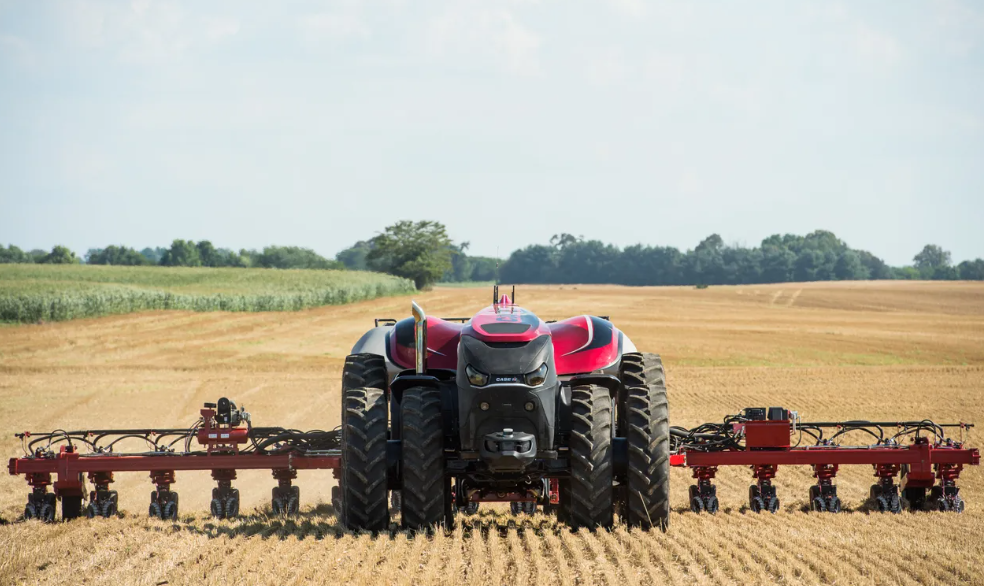
Maximizing Tractor Efficiency: Maintenance and Operational Best Practices for Modern Farmers
Introduction: The Tractor as the Heart of the Farm
Every Australian farmer knows that the tractor is more than a machine — it’s the heartbeat of daily operations. Whether cultivating soil, hauling equipment, or maintaining pastures, it’s the one tool that keeps the entire farm moving.
With the growing range of tractors for sale featuring new technologies and advanced systems, efficiency has become as important as power. Understanding how to maintain and operate your tractor correctly is the key to getting consistent performance, longevity, and value from your investment.
1. Why Maintenance Is the Secret to Productivity
Routine maintenance may seem like an extra chore, but it’s one of the smartest investments a farmer can make.
A well-maintained tractor delivers:
- Higher fuel efficiency
- Reduced repair costs
- Improved safety and reliability
- Longer working life
Neglecting maintenance, on the other hand, leads to breakdowns, wasted fuel, and costly downtime during critical seasons.
2. Understanding the Modern Tractor System
Today’s tractors are more advanced than ever, featuring a mix of mechanical and digital components that require balanced care.
Key Systems to Monitor:
- Engine and Fuel System: Modern diesel engines rely on clean filters and proper lubrication for performance.
- Hydraulics: Control power to attachments and lifting mechanisms.
- Cooling System: Essential for managing heat during long working hours.
- Transmission and Clutch: Require regular oil checks to avoid wear.
- Electrical and Sensor Systems: Power lights, controls, and digital displays.
Each of these systems must work together for optimal efficiency — meaning maintenance is no longer just about oil and filters, but also about software and calibration.
3. Daily Maintenance Checklist for Tractors
Before starting work, operators should perform a quick inspection.
Here’s a simple daily checklist that applies to both older and newer tractors:
| Check Item | Purpose |
|---|---|
| Oil and coolant levels | Prevent overheating and engine damage |
| Hydraulic fluid | Ensure smooth operation of implements |
| Tire pressure and tread | Maintain traction and fuel efficiency |
| Air filters | Prevent dust and debris from entering the engine |
| Battery charge and terminals | Support electronics and starter systems |
| Lights and signals | Improve safety during operation |
| Grease fittings and joints | Reduce friction and wear on moving parts |
Performing these simple checks can extend your tractor’s lifespan and avoid mid-season breakdowns.
4. Seasonal Servicing Schedule
Routine servicing should align with the intensity of tractor use. For most farms, this includes:
- Pre-Season Service: Full inspection of fluids, filters, and belts before planting or harvesting begins.
- Mid-Season Check: Oil change, tire rotation, and cooling system cleaning.
- Post-Season Maintenance: Deep cleaning, fuel stabilization, and storage preparation.
Following a consistent schedule ensures that when your tractor sits idle, it’s ready to go again without surprises.
5. Modern Technology and Maintenance Simplified
Technology is making tractor maintenance easier. Many of today’s models come with digital dashboards that display service reminders and error codes.
Smart systems can track:
- Oil pressure and temperature fluctuations.
- Fuel consumption rates.
- Hydraulic pressure balance.
- Overall hours of operation.
Some tractors even allow you to download diagnostic data via USB or connect remotely for service updates.
This shift toward data-assisted maintenance helps operators prevent problems before they occur.
6. Common Tractor Mistakes to Avoid
Even experienced operators make maintenance errors that reduce machine performance. Avoid these common mistakes:
- Ignoring filter replacements: Dirty air or fuel filters can severely damage modern engines.
- Using incorrect lubricants: Always follow the manufacturer’s specifications.
- Overloading the tractor: Excessive strain reduces hydraulic life and increases fuel use.
- Skipping warm-up time: Allow the engine to reach operating temperature before heavy use.
- Neglecting storage conditions: Exposure to moisture and sunlight causes corrosion and tire damage.
Smart maintenance isn’t about doing more — it’s about doing the right things at the right time.
7. Fuel Efficiency: Small Habits, Big Results
Fuel is one of the biggest costs in operating a tractor. By adjusting your habits, you can significantly cut expenses without compromising performance.
Tips for Better Fuel Efficiency:
- Keep tires properly inflated.
- Use low engine RPM for light work.
- Avoid excessive idling.
- Plan field routes to minimize turns and overlaps.
- Regularly service fuel injectors.
Many modern tractors for sale now include efficient engines and power management systems that automatically optimize fuel usage — a valuable feature for long working hours.
8. Storage and Off-Season Care
When your tractor isn’t in use, proper storage keeps it in top shape.
Storage Best Practices:
- Store under a covered shed or use a waterproof cover.
- Disconnect the battery and store it separately.
- Drain or treat fuel to prevent moisture buildup.
- Lubricate moving parts before storage.
- Protect tires by parking on solid ground or using stands.
Taking these steps ensures your tractor starts smoothly after long idle periods, avoiding costly spring repairs.
9. The Operator’s Role: Skill Meets Efficiency
A tractor’s performance isn’t just about its mechanical condition — it’s also about how it’s operated.
Skilled operators know how to:
- Match gear and speed to the task.
- Use appropriate ballast and tire settings.
- Adjust implements to maintain even workloads.
- Recognize early warning signs of mechanical issues.
Proper training and operator awareness can often improve performance as much as regular maintenance.
10. Long-Term Value: Maintenance as an Investment
Regular servicing and responsible operation don’t just protect your equipment — they also preserve resale value.
When looking at listings of used tractors for sale, well-maintained models consistently command higher prices.
A clean service history, consistent oil changes, and proper usage records all contribute to better trade-in or resale potential later on.
Conclusion: Care Today, Power Tomorrow
Modern tractors are more advanced and capable than ever before — but with that complexity comes the responsibility of proper maintenance. Whether you operate a compact model or a large utility tractor, following best practices ensures optimal performance, fuel efficiency, and safety.
Tractors remain the core of Australian farming, and through thoughtful care, they’ll continue driving productivity for decades to come.
FAQs on Tractor Maintenance and Efficiency
1. How often should I service my tractor?
Most tractors require service every 100–200 operating hours, depending on workload and manufacturer guidelines.
2. Can I perform maintenance myself?
Basic tasks like filter changes and oil checks are DIY-friendly, but complex issues should be handled by qualified technicians.
3. How do I know if my tractor’s engine needs attention?
Watch for reduced power, smoke, or increased fuel use — signs that filters or injectors may need servicing.
4. What’s the best way to improve tractor fuel economy?
Maintain correct tire pressure, avoid idling, and service fuel systems regularly.
5. Do modern tractors really need less maintenance?
They’re more efficient, but still require consistent checks especially for hydraulic and digital systems.




